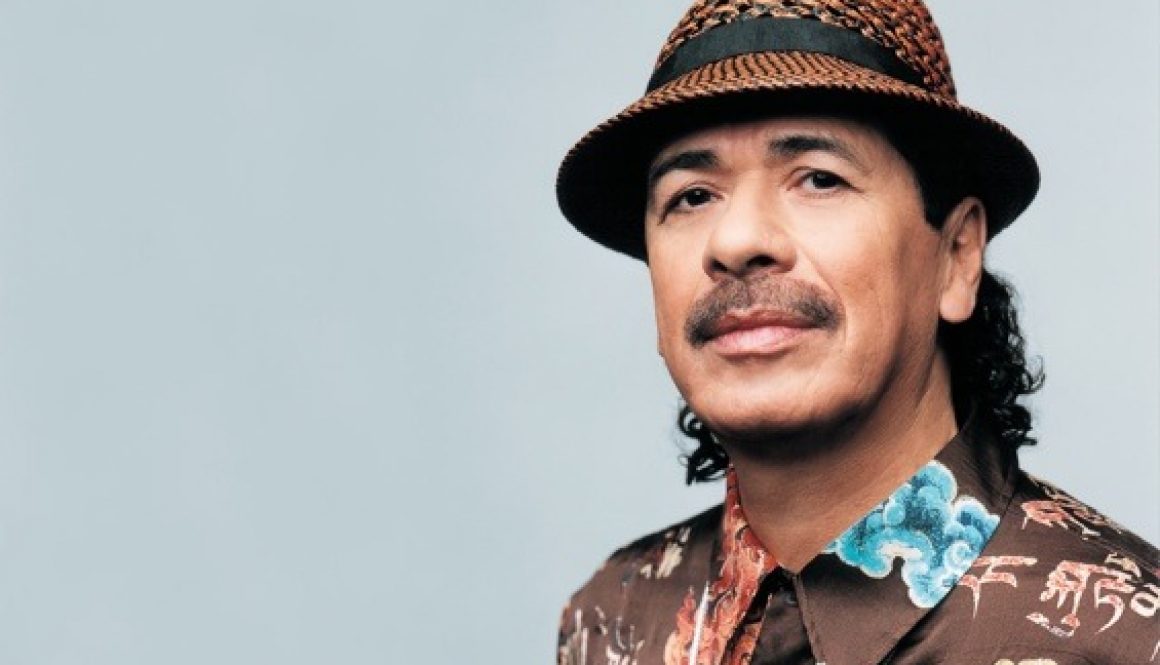Carlos Santana – Music Biography

Carlos Alberto Santana Barragán was born in Autlán de Navarro, Mexico, in July of 1947. His father played violin in a mariachi orchestra and young Carlos would take up both violin and guitar before the age of nine. Like many other guitarists of his age, he was greatly inspired by blues artists, such as B. B. King and John Lee Hooker. He also idolized Ritchie Valens (born Ricardo Esteban Valenzuela Reyes), being one of the few Mexican-Americans in the rock music scene. Like Valens, Santana was raised on a variety of music, from mariachi and flamenco to rhythm and blues and rock.
The Santanas moved to San Francisco, where Carlos graduated from high school in 1965. He kept playing guitar and taking lessons, too, and made the decision to try making a career out of music. Being in San Francisco in the mid-1960s, this seemed like a great idea as there was so much music going on. Santana saw great guitarists, like B. B. King, when they played shows in town and he spent his time busking and improving his playing. And he also spent his time listening to even more of the music going on around him, particularly jazz performances. He would often go to performances at Fillmore West.
It was at this legendary music venue that Santana got his first break. His manager had managed to get the young guitarist a spot playing as one of the guitarists in an impromptu band that was sitting in place of Paul Butterfield (who was too intoxicated to perform) for a Sunday afternoon gig. His playing made an immediate impression on rock promoter Bill Graham and, encouraged by his success, Santana put together a band (named, appropriately enough, “Santana”) with some friends and made themselves a big enough following in the San Francisco club scene to catch the ears of Clive Davis of Columbia Records.
As fortune would have it, the band’s first album, Santana, was released almost immediately after the group had played an incredibly well-received performance at Woodstock. Bill Graham managed to get them a spot in the festival even though they hadn’t yet released their first record. When it did come out, Santana reached #4 on the Billboard album charts and their second single, “Evil Ways,” (a song that Graham encouraged the band to record) cracked the Top Ten on the singles charts.
While the band’s success grew immensely, gaining them both critical accolades and an international audience, it also led to division within the group. Carlos’ desired to explore more than just the rock and blues aspects of the music – not just the Latin rhythms but also jazz, as he was listening a lot to artists like John Coltrane, Miles Davis and others.
Santana (the band) underwent numerous personnel changes but they still managed to produce two more albums. Their third, Santana III, was released in September 1971 and reached Number 1 on the album charts on the strength of its two singles, “No One to Depend On” and “Everybody’s Everything.” Both songs featured guitar solos from 17 year-old Neal Schon, who would leave the band to join Journey the following year. Santana himself would not hit the top spot on the charts until over twenty-five years later.
Throughout most of the next quarter of a century, Carlos Santana’s music would take on an almost Jekyll and Hyde duality. He would explore jazz and instrumental music much more often, as on albums such as Carlos Santana and Buddy Miles Live! and Caravanserai
(both from 1972), Welcome (1973) and Lotus (1975). But then, usually under Bill Graham’s influence, he would also go back to his rock / blues / Latin roots for Amigos (1976), which features the sublime instrumental, “Europa (Earth’s Cry Heaven’s Smile)” and Moonflower (1977), with its monster hit being a cover of the Zombie’s “She’s Not There.” His 1983 solo release, Havana Moon went so far into Carlos’ musical history as to have “Vereda Tropical,” a song sung by his father Jose (who also played violin), accompanied by his dad’s mariachi orchestra.
But regardless of what the public thought of his albums, Santana’s live performances were still legendary. When Bill Graham managed to get Santana on the bill for the first Live Aid concert, the group’s set was a showstopper.
Partially to escape the pressure of dealing with record company executives and partially to simply recapture the joy of making music, Santana went back to jamming and sitting in with other musicians. From the last half of the 1980s and throughout the 1990s, you could find him playing with the likes of jazz icons like Weather Report, Wayne Shorter or McCoy Tyner or old jam band folks like Mickey Hart.
In 1998 he found himself back with Clive Davis, who was now Arista Records. With Davis’ encouragement, Santana recorded an album that played to his strengths, making music with other artists. Each song of the entire album, Supernatural, was a collaborative effort musically and it has sold close to 27 million copies – the most ever by a Hispanic artist. It would also net Carlos eight Grammy awards.
Since Supernatural, Santana has continued to record and tour. And he still loves working with others to spread the joy of music around. In Europe, promoting the 2005 release All That I Am (featuring guests as diverse as Steve Tyler of Arrowsmith, Kirk Hammett of Metallica, Joss Stone, Sean Paul and Michelle Branch), Santana’s concerts were opened by his son Salvador’s band.
